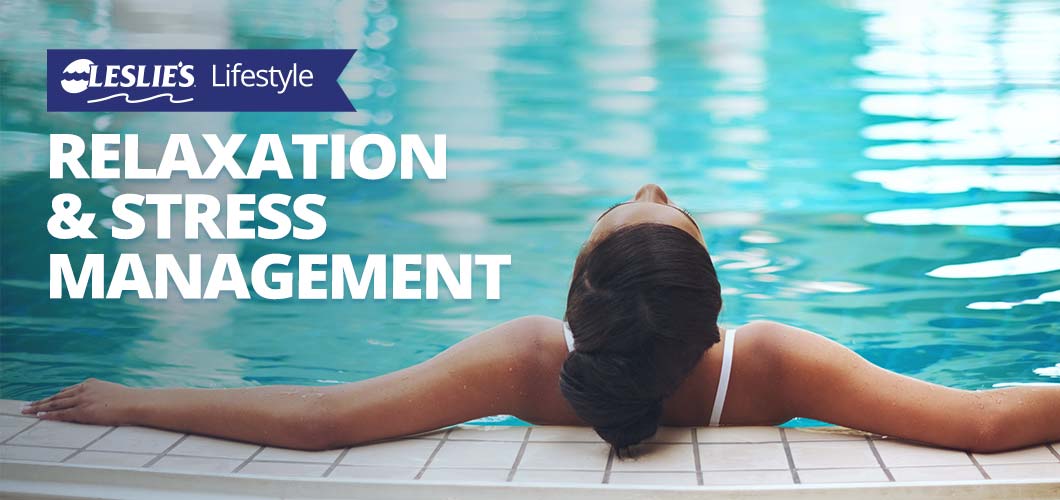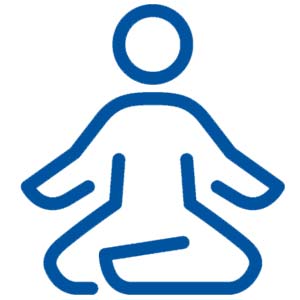
At-Home Relaxation & Stress Management Tips
We live in stressful times. Whether it’s finances, your career, health status, family members, relationships, that ever-growing to-do list, or general uncertainty, there always seems to be something to worry about. But it’s not good to harbor that stress and anxiety. It’s hard on both your mental and physical health. So what can you do about it? We’re here to help you with a few simple tips and techniques for practicing relaxation and stress management at home.
RELAXATION & STRESS MANAGEMENT
You don’t have to venture out to the local spa, take a yoga class, or even visit a mindfulness center to put your stress behind you. To relax at home, start by finding a quiet, comfortable area. For some people, a little bit of soothing white noise or soft music is more relaxing than absolute silence, so do whatever works best for you. Whether you’re sitting in the living room, soaking in a warm bath, or doing yoga on the mat, just make sure to focus on a few key things to help clear your mind and ease your response to stress:

Deep Breathing

Relaxation

Self Care
1. Find your focus with slow, deep breaths.
Breathing exercises can quiet the mind, slow a racing pulse, and help anxiety subside. Be mindful with each inhale and exhale, and let your thoughts and emotions fade away. Focus on breathing deeply through your stomach (so to speak), expanding your rib cage and filling your belly each time you inhale. Then exhale slowly and fully to let the air back out again. Try to time your breaths on counts of four or six to keep the breathing slow and deliberate.
2. Relax your muscles.
Your body naturally becomes tense when faced with stressful situations. Learning to relax your different muscle groups is an important part of stress management. Focus on the areas of your body that are tense, and imagine the tightness leaving your body as you relax your muscles and focus on your breathing. For particularly tight and sore muscles, a warm bath, massage, warm compresses, or soothing gel may help release the tension. You can also try progressive muscle relaxation, which involves deliberately tensing and relaxing each muscle group. This helps with body awareness, and makes it easier to relax your entire body quickly.
3. Care for your mind and body.
When we’re stressed to the max, sometimes the best relief comes in the form of self care. There are several ways you can do this.
- Use your favorite lotion to moisturize your entire body after a warm shower or bath — you’ll feel amazing.
- Release endorphins with exercise. Go for a walk. Ride a bike. Go swimming. Crank up the speakers and dance to your favorite song. It really doesn't matter what you do. Just get that blood pumping!
- Spend at least 10 minutes every day doing something you enjoy. Work on a puzzle, play with your pets, draw, read, write a journal entry, sing, or any number of other things that you like to do.
- Unplug from your electronics, especially before bed.
- Develop a relaxing bedtime routine to ensure your mind is quiet and ready for a good night’s sleep. A hot shower, a warm cup of tea, and a good book will get you ready for bed.
Practice makes perfect! Small changes in your daily routine will add up to a happier, healthier lifestyle over time.
POOL RELAXATION TIPS
Make some time for a little hydrotherapy in your daily routine. When you think about it, a swimming pool is the perfect tool for relaxation and stress management at home. You can relax your muscles, focus on your breathing, clear your mind, and care for your body all at the same time.
Close your eyes, float on your back, and focus on breathing deeply as the water carries you on the surface. Your body will rise up with each inhale, and drop slightly into the water with each exhale. Pay attention to the feel of the water against your skin as you float and move around in the water. The ambient sound as the water as it ripples around you will help you quickly find your zen. If you’re not keen on staying afloat on your own, just relax on the steps, lean back in an in-pool lounge chair, or bring floating foam lounger in the water.
If you’re craving an endorphin rush, exercise in the pool for a few minutes to get your heart rate up. For maximum impact, make it a habit to spend at least 10-20 minutes exercising in the pool, followed by a minimum of 10 minutes of relaxation.
Even if you’re not in the mood to take a dip in the pool, you can still practice breathing exercises, muscle relaxation, and general mindfulness while lounging on some comfortable patio furniture near the pool. The ambient sounds of nature and moving water can be quite soothing.
HOT TUB RELAXATION TIPS
A warm, bubbling soak in a spa or hot tub can have a profound effect on your mental and physical state. As you’re sitting in the hot tub, close your eyes, and focus on the sensations of the water around you. Release the tension in your muscles, and allow the hot water and jet streams to work the tightness out of your body. Focus on deep breathing, extending your ribs and belly outwards to accommodate the maximum amount of air with each inhale. To enhance your relaxation and stress relief, try using hot tub aromatherapy in your favorite soothing fragrance. As the steam rises off the surface, the added aromatic boost will bring further awareness to your senses as you practice your breathing exercises. Different fragrances promote different responses, from calming to energizing.
As the saying goes, “an ounce of prevention is worth a pound of cure.” Make a diligent effort to practice mindfulness, relaxation, and self-care on a daily basis. Even as little as five minutes each day can have a significant impact on your long term mental and physical health.